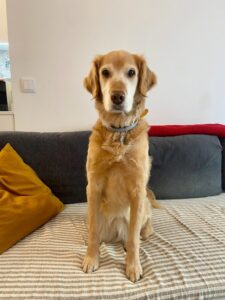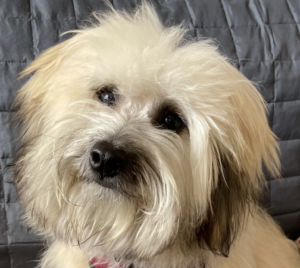For a relaxing trip with your dog safely at your side and during the flight with you in the cabin ensures the good behaviour of your dog. Practice this daily and prepare yourself well, especially in the points that are difficult for your four-legged friend.
The training for PSD (Psychiatric Service Dog) can be carried out by you, but a certification must be carried out by an independent trainer or an independent institute. Our focus at ESAeurope is to teach, review and then enable certification through the PSDeuope Card, the rules and bids published by the US Department of Transport.
In order to make sure that your dog masters the travel challenges well, the training is important in advance. Practice daily even after the certification meeting until departure!
What are the key points of training for PSD (Psychiatric Service Dog) according to US DoT standards?
1. Good socialization towards humans and animals!
It is not tolerated to repeatedly bark or growl other persons or animals, jump up or jump on humans or conspicuous and inappropriate behavior, such as continuous barking or fieping.
If your dog scratches, snaps or bites other people or accompanying animals, it is immediately locked in a safe container or transported in the hold. It can even lead to further measures to deny your dog the flight.
Appropriate behaviour is required – the dog must be able to master all challenges inconspicuously. Examples are: queuing in line at check-in or airport checks, customs checks or security checks.
Passing through the security checks, running through narrow corridors and also through crowds of people. Your PSD must tolerate the noises during the flight, be trained in wearing a muzzle and wearing a dog diaper. It must also be able to facilitate itself in an appropriate way.
2. The following Skills & Tasks (Basic Commands) are to be mastered:
- Running on a loose leash
- Command Seat
- Command Place
- Command Stay
- Understand call signal (practice on hand luggage)
- Wearing a muzzle, chest harness with identification or dog diaper (for longer flights or in case of incontinence of the animal)
- Control activities by the dog owner such as allowing body scanning, examination of paws, opening of the mouth, lifting and being carried (according to the size of the dog)
- Your PSD must remain in a container (appropriate for the dog) at the seat, close to the legs
3. Hygiene and cleanliness
- Any marking, uricor or defecating is prohibited. (Race-specific characteristics such as mucus, the distribution of speichelse secretions or water clattering when drinking is accepted, whereby the keeper is obliged to minimize possible consequences)
- Losing hair during stress, is also tolerated)
- ESA Recommendation: Please note the necessary body care during the trip (wet wipes should always be available in order to be able to clean paws and genitals. Also carry an incontinence pad or dog diaper)
4. Security
- Linen duty.
- The dog must not walk in and out of the aisle during the flight
- Wearing a bite basket is sometimes required. For example, when you call for fellow travellers. Of course, the dog drink or eat as needed. Dogs that are not transported in containers must be accustomed to wearing muzzle. Small dogs can be carried or carried in containers or dog trolleys Be.
5. Tasks & Skills Training:
- special psychoeducational communication in the human-animal team. Each human-animal team has to create a personal task list. (e.g. How comforts my dog and how does he not help me to stay sad …). It is important to define and train skills that your dog provides exclusively for you
- Create a personal TASKLIST that describes about 5 points, which describes exactly what the dog does and has learned for you specifically. This should be comprehensible to others and it should be clear that the dog will support you during the trip and act as a “medical aid” for you.
Tip ESAeurope: This list should be written in English. If you demand, you can show the list. According to US DoT standards, you must not be prompted to present or demonstrate these tasks. But it is certainly helpful to show one or the other task. The dog must not be asked by airline staff for its name or addressed by its name in order not to confuse, stress or distract from its work as a PSD.



